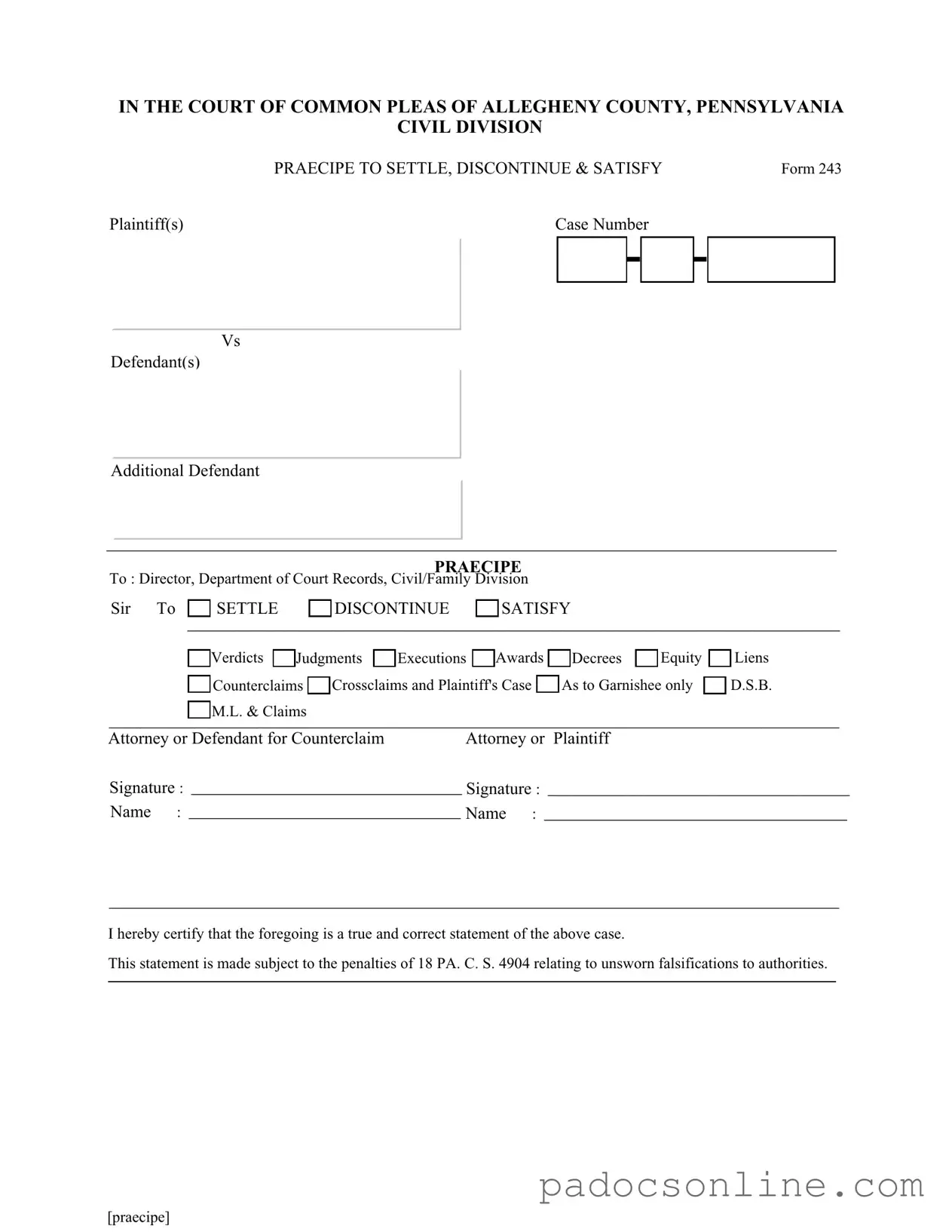Filling out the Pennsylvania 243 form can be straightforward, but several common mistakes can lead to complications. One frequent error is failing to include the correct case number. The case number is crucial for identifying the specific legal matter at hand. Omitting or miswriting this number can delay processing and create confusion in the court system.
Another common mistake involves incorrect signatures. The form requires signatures from both the plaintiff and the attorney, if applicable. If either signature is missing or illegible, the court may reject the form. It is essential to ensure that all required signatures are present and clearly written to avoid unnecessary delays.
People often overlook the importance of correctly identifying all parties involved in the case. The form should clearly list the plaintiff(s), defendant(s), and any additional defendants. Incomplete or inaccurate information can lead to complications in the legal process, potentially affecting the outcome of the case.
Additionally, individuals sometimes fail to specify the action being taken—whether it is to settle, discontinue, or satisfy a claim. This section must be filled out accurately to inform the court of the intended action. Misunderstanding this part of the form can result in the court not processing the request as intended.
Another mistake occurs when individuals do not properly certify the accuracy of the information provided. The form includes a certification statement that must be signed. Neglecting to complete this section can lead to allegations of falsification, which may have serious legal consequences.
Lastly, people may not pay attention to the penalties associated with providing false information. The form includes a warning regarding the penalties for unsworn falsifications. Being unaware of these consequences can lead to unintended legal repercussions. It is essential to approach the completion of the Pennsylvania 243 form with care and attention to detail to ensure compliance with all requirements.
